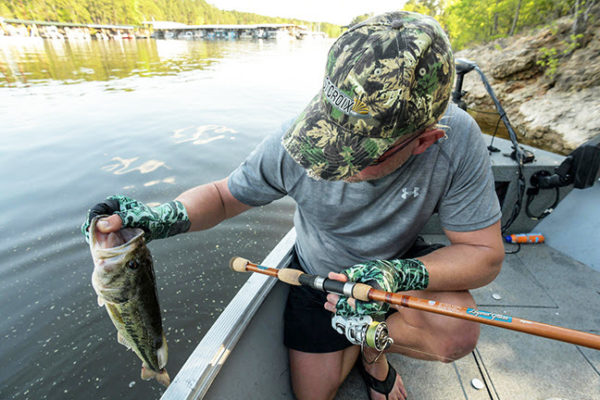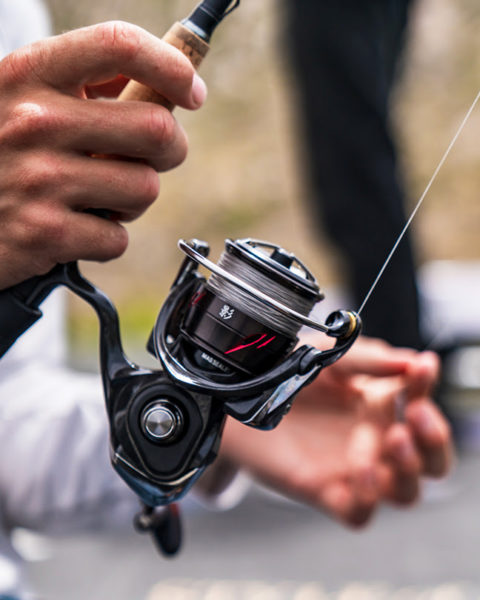Crankbaits on the Calendar
Category: article
Jul 29th, 2021 by Keith Worrall
Modified Jul 29th, 2021 at 9:53 AM
Crankbaits on the Calendar
Hardcore cranker Noel Vick makes a solid case for hardbaits in the heat.
Confidence baits. We’ve all heard the phraseology. It’s that lure or select few baits anglers go-to at the onset, or if what’s supposed to be in play according to your horoscope or bait shop intelligence…isn’t. Full disclosure. Hardbaits were my Achilles heel, or rather, a category I avoided for years because I didn’t trust or understand them.
That all changed in a former life when I lived on the Ouachita River in Hot Springs, Arkansas. I only scratched the hardbait surface while in the Natural State, but before I knew it, crankbaits became my confidence bait. I threw and kayak-trolled them for everything this amazing span of water offered, swapping models, sizes and colors to fine-tune matters. Nothing was safe from me, boating everything from striped bass to spotted and largemouths, crappies to bluegills and walleyes. Now, I open with hardbaits and modify only if cranks aren’t getting it done, regardless of the situation.
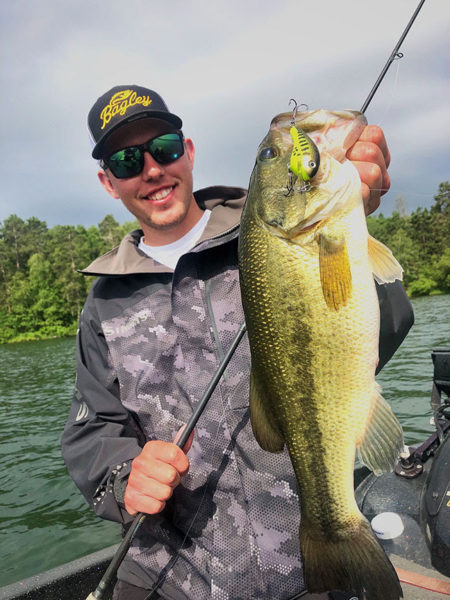
Late summer and early autumn foster a period where crankbaits can evolve into your favored baits, too. Most every freshwater gamefish in North America will lay its life on the line for a perfectly selected and presented crankbait. They can’t help themselves.
The atmosphere is ideal, too. Warm water temperatures have fish lunging at things they can barely fit in their mouths, and with cavalier confidence. Bass are blowing up on nearly eater sized panfish. Young-of-the-year baitfish, like shad and shiners, are flirting with adulthood. Gamefish even cannibalizing on lesser sizes of their own species isn’t out of the question.
Speed kills, too. Temperate water and heightened metabolism put gamefish in hot pursuit of their quarry, including your hardbait. Moreover, crankbaits afford the ability to cover water quickly, combing for active fish. You can always dumb-down to a jigworm, dropshot or Carolina rig if marks aren’t materializing into strikes. It’s always prudent to leave the dock with a couple plastics combos prepped for immediate deployment.
Crankbaits excel in so many ways, painting a target on myriad structures and situations. Deep rocks are universally loved by gamefish in late summer and early autumn. Here, they find slightly cooler climes, and shadowed hideaways for chilling and ambushing. Crawfish get gobbled, too, as do as passing baitfish. Deeper reefs and rocky points are great spots to explore.
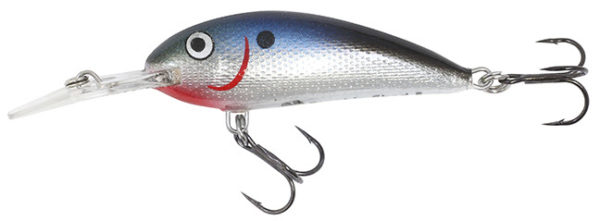
Reservoir pundits know it’s crankbait season as well. Offshore, seemingly in the middle of nowhere, spotted and sometimes largemouth bass amass in significant schools to partake in massive meals of young-of-the-year shad. Giant bait balls hover at or near the surface and down midway through the water column, location in the water column contingent on time of day and light levels. Bass are often seen on electronics lurking just beneath these pods. By day, bass often skim the bottom of the schools for exposed shad. At the bookends of the day, it’s common to see hordes of shad rippling the surface accessorized by bass making a mess of things. In both scenarios, crankbaits are preferred, with shallow runners favored when surface feeding is underway and deep divers the prime choice if the food source is squatting below.
Another popular summer and fall reservoir technique is cliff diving, meaning working crankbaits along steep and deep bluffs. Here, bass often suspend just off the structure, or tuck back into rocked nooks and crannies. Never ignore creek channels, either, especially deeper cuts as they ply into the main lake. Better yet if the channel is lined with submerged timber.
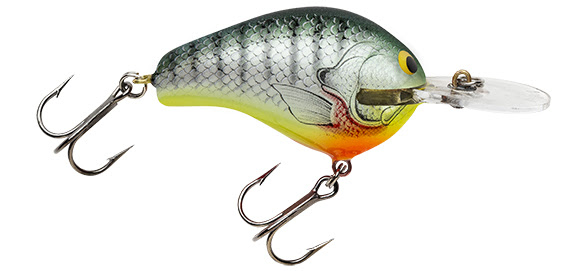
On northern natural lakes, warm weather finds bass milling along or just inside deep weedlines, particularly when in conjunction with a main lake point. Long straight casts along the greenery often produces hefty bass, not to mention bonus walleyes, pike and larger-than-life panfish.
Equally crucial to locating fishy areas is tying up the right stuff. You want crankbaits that can achieve the targeted depth, as well as replicate the approximate size and coloration of the forage.
Northland Fishing Tackle’s new Rumble Shad has become an instant favorite. The #5 dives 5’ to 12’; the #7 dives 8’ to 16’; and the #8 dives 14’ to 21’. All are formed of balsa through a unique Heat Compression Molding (HCM) process and feature a welded through-wire construction from the tie eye to the tail. Designed to imitate shad, perch and bluegills, the bait features a tight action. For baitfish-oriented bass, I prefer Shiner and Pink Pearl.
Bagley’s Diving Balsa B is another surefire choice. This is the fastest-diving crankbait made: big bodied and lead-lipped, with a dive-bomb descent angle that gets straight to work with a thumping balsa body action that ignites violent strikes. Diving Balsa B’s run 10’ to 12’. My top choices are Black Back/Silver Foil, Bluegill and Bass patterns.
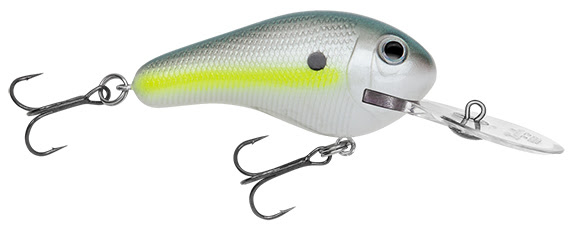
When fish are up and near the surface, Bagley’s Rattlin’ Kill’r B gets the job done. It is carefully designed to cast far and to emit a low resonating rattle upon retrieve. Of course, this bait has an aggressive Bagley hunting action – in keeping with its legendary balsa brothers. The square bill lure is perfect for ricocheting off timber and submerged stumps and rocks, too. The Rattlin’ Diving Kill’r B is available in one size and 15 colors. Here, I opt for a bit more color, preferring Bluegill, Sexy Shad and Chartreuse Shad.
To maximize your efforts, pair the carefully selected crankbait with specialized gear. And no rods can better leverage crankbaiting than St. Croix Rod’s Legend Glass series. The award-winning Legend Glass series has redefined performance in crankbait fishing. Its unbelievably lightweight linear S-glass blank, created with IPC® mandrel technology, is the reason behind this rod’s meteoric rise to the top. For this application, I err toward the 7’ 2” medium power, moderate action LGC722MM when in baitcasting mode. Oftentimes, for really fast fishing, I go to its spinning brother, the Legend Glass 7’ 2” medium power, moderate action LGS72MM.
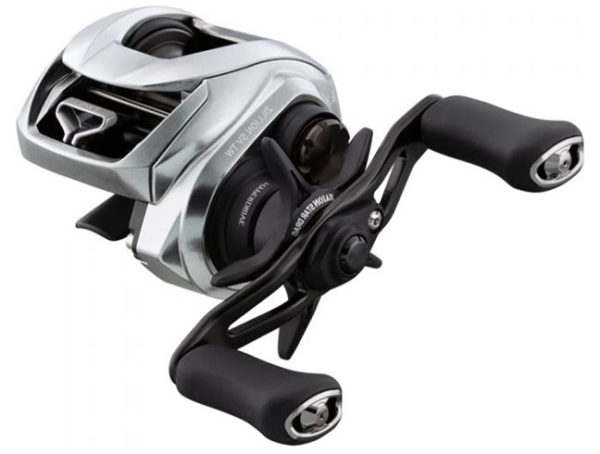
Marry that magical glass wand to a premium, balanced reel. For baitcasting, consider Daiwa’s Zillion SV TW in a 7.1:1 gear ratio. Offering a compact profile for easy handling, the shallow SV Free Floating Spool design allows you to cast with virtually no backlashing. You barely have to thumb the spool even with lightweight lures, and its TWS T-Wing System solves an age-old problem with baitcasting reel levelwind systems by reducing friction and harsh line angles on the cast. It allows line to flow freely through the wide, top section of the T-Wing System on the outcast, and on the retrieve when the handle is engaged, the line drops into the lower channel of the T-Wing for even distribution across the spool width. The result is longer, more precise casting, even spool speed, and virtually zero backlashes.
When spinning, go with Daiwa’s Kage MQ LT. First, the reel series features a one-piece MONOCOQUE Zaion body that allows more space in the reel body for larger gears that allow more torque and power from the get-go at the same gear ratios of competitive reels. The Kage family of reels is also Magsealed, features an Air Rotor and Air Bail, A7075 aircraft grade aluminum Digigear technology, Advanced Tournament Drag (ATD), premium cork handle knobs, and a machined aluminum screw-in handle.
Braid is the way to go for long casts and solid hooksets. For cranking, I spool with Daiwa J-Braid x8 Grand. Strong, and resistant to abrasion yet well-bodied enough to lay smoothly on the spool, the premium 8 carrier braid is spun with Izanas, a state-of-the-art Japanese material. Go with 20-lb. for a good do-everything weight.
A fluorocarbon leader is a must as well. Tie in a roughly two-foot section of Daiwa J-Fluoro Leader in 15- to 20-pound test. The leader lends invisibility and a bit of shock absorption when you put the pins to it.
Lastly, I’m a snap guy. Purists might roll their eyes, but I like the lure changing speed, and I actually believe it gives a crankbait the freedom to maximize its action. A simple Eagle Claw Dual Lock Snap has never failed me.
So, yes, crankbaits have become my confidence lures. And this is only one application where they can outshine your current confidence baits.
